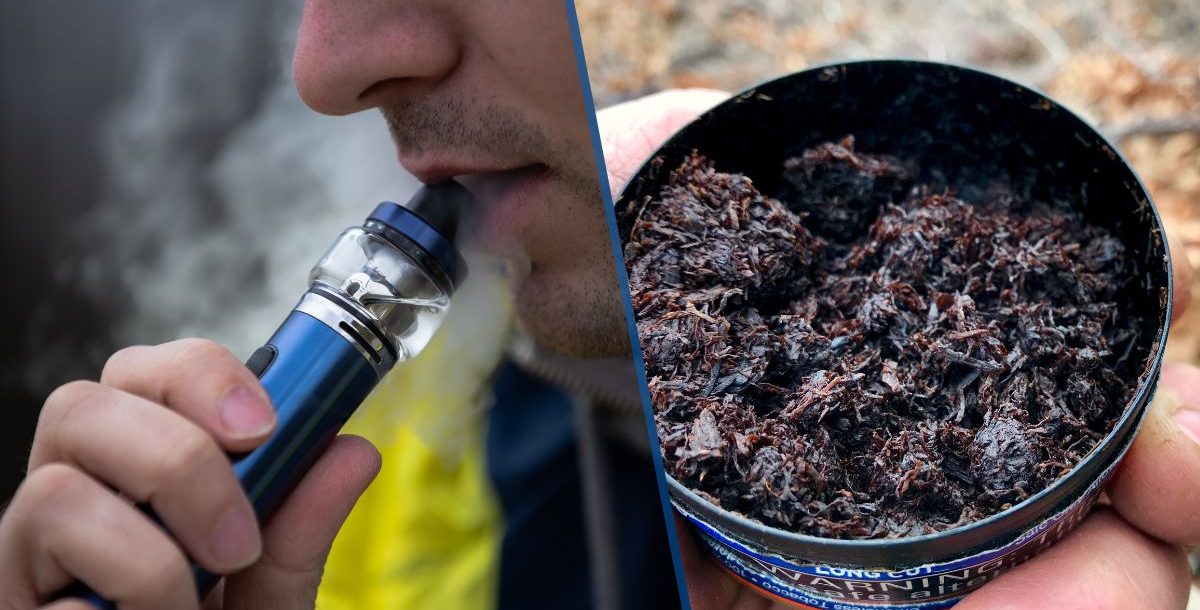Figuring out how to quit nicotine can be a challenging undertaking. Whether you use cigarettes, cigars, vaping devices, chewing tobacco or nicotine packets, the journey to a nicotine-free life starts with the decision to quit.
Quitting nicotine effectively requires a personalized approach, as different products may need different strategies. Let’s explore various methods for quitting and find the right path for you.
Understanding nicotine addiction
Nicotine is a highly addictive substance that affects the brain, causing physical dependence and cravings. When you use nicotine products, your brain releases chemicals that create feelings of pleasure. Over time, your body becomes used to this stimulation, making it difficult to quit.
Withdrawal symptoms from nicotine can include irritability, difficulty concentrating, sleep disturbances and intense cravings, which may vary in duration depending on the type of nicotine product used. By understanding the nature of nicotine addiction, you can choose strategies that will work best for you.
Strategies for quitting different nicotine products
When considering how to quit nicotine, it’s essential to think about the specific products you use. Here are some strategies for quitting various forms of nicotine:
Cigarettes and cigars
Traditional smoking cessation methods include nicotine replacement therapy (NRT) options like patches, gums, lozenges, nasal sprays and inhalers. These can help reduce withdrawal symptoms while you gradually cut down on nicotine use. Prescription medications may also help reduce cravings.
Behavioral therapy, which involves working with a counselor to identify triggers and develop coping strategies, is another effective approach. Some people may choose to quit gradually by reducing the number of cigarettes smoked each day, while others prefer to quit “cold turkey.”
Vaping
While many turn to vaping as a way to quit smoking, it’s not a recommended cessation method. If you’re trying to quit vaping, it’s important to find other forms of support, such as NRT or prescription options, combined with behavioral strategies.
Gradual reduction may help, but setting a quit date and sticking to it is often more effective. The use of vaping-specific support groups may also provide motivation and guidance.
Chewing tobacco and nicotine packets
Smokeless tobacco users face their own set of challenges when quitting. Gradual tapering, where you slowly decrease the amount used each day, can help ease withdrawal symptoms. NRT products like gums or lozenges are particularly helpful, as they provide a similar oral sensation.
Behavioral support and counseling can be beneficial, especially in identifying triggers and replacing the habit with healthier activities.
Dual users, or using multiple products
If you use more than one nicotine product, it’s important to quit all forms simultaneously for the best chance of success. Consider a combination of NRT products, medications and behavioral therapy to address the varying ways in which your body and mind have become dependent on nicotine.
Common questions about quitting nicotine
1. What is the easiest way to quit nicotine?
The easiest way to quit nicotine often involves a combination of NRT, behavioral support and lifestyle changes. Having a support system in place – whether through friends, family or professional counseling – can significantly increase your chances of success.
2. How long does nicotine withdrawal last?
Nicotine withdrawal symptoms can begin within hours after your last use and usually peak within a few days. However, they can persist for weeks or even months, depending on factors like how long you’ve been using nicotine and the specific products you use.
3. When will I stop craving nicotine?
Cravings tend to decrease in frequency and intensity over time. For some people, they can last several months, while others may experience them for a year or more. Developing coping strategies, such as exercise, mindfulness or engaging in hobbies, can help reduce the impact of cravings.
4. Is it better to quit nicotine cold turkey?
Quitting cold turkey can work for some, but it’s not necessarily the best approach for everyone. While it eliminates nicotine from the body quickly, withdrawal symptoms can be more intense, making relapse more likely. For many, a gradual reduction combined with NRT and behavioral support leads to a more manageable quitting process.
The health benefits of quitting nicotine
The benefits of quitting nicotine go far beyond just improving your physical health. When you quit, you reduce your risk of developing serious conditions like heart disease, stroke and cancer.
You’ll also protect those around you from secondhand smoke exposure and enjoy other lifestyle improvements, such as better taste and smell, more energy and financial savings from not buying nicotine products. Most importantly, quitting nicotine empowers you to take control of your health and future.
Remember, you don’t have to go through this journey alone.
There are numerous support options available, from smoke-free support groups to health care professionals who can help create a personalized quitting plan. Consider seeking advice from a doctor who can provide recommendations on NRT or prescribe medications to assist in your quitting efforts. Support groups and online communities can also offer encouragement, tips and shared experiences to help you stay on track.
The journey to quitting nicotine is unique for everyone and finding the right approach may take time. However, the benefits are well worth the effort. If you’re ready to quit, start by consulting a health care professional who can guide you in developing a tailored plan. Remember, every step you take toward a nicotine-free life is a step toward better health and well-being.
Need to talk with a health care professional about quitting nicotine? Find a Mercy Health primary care provider near you.






